Stability & Pitching Mechanics
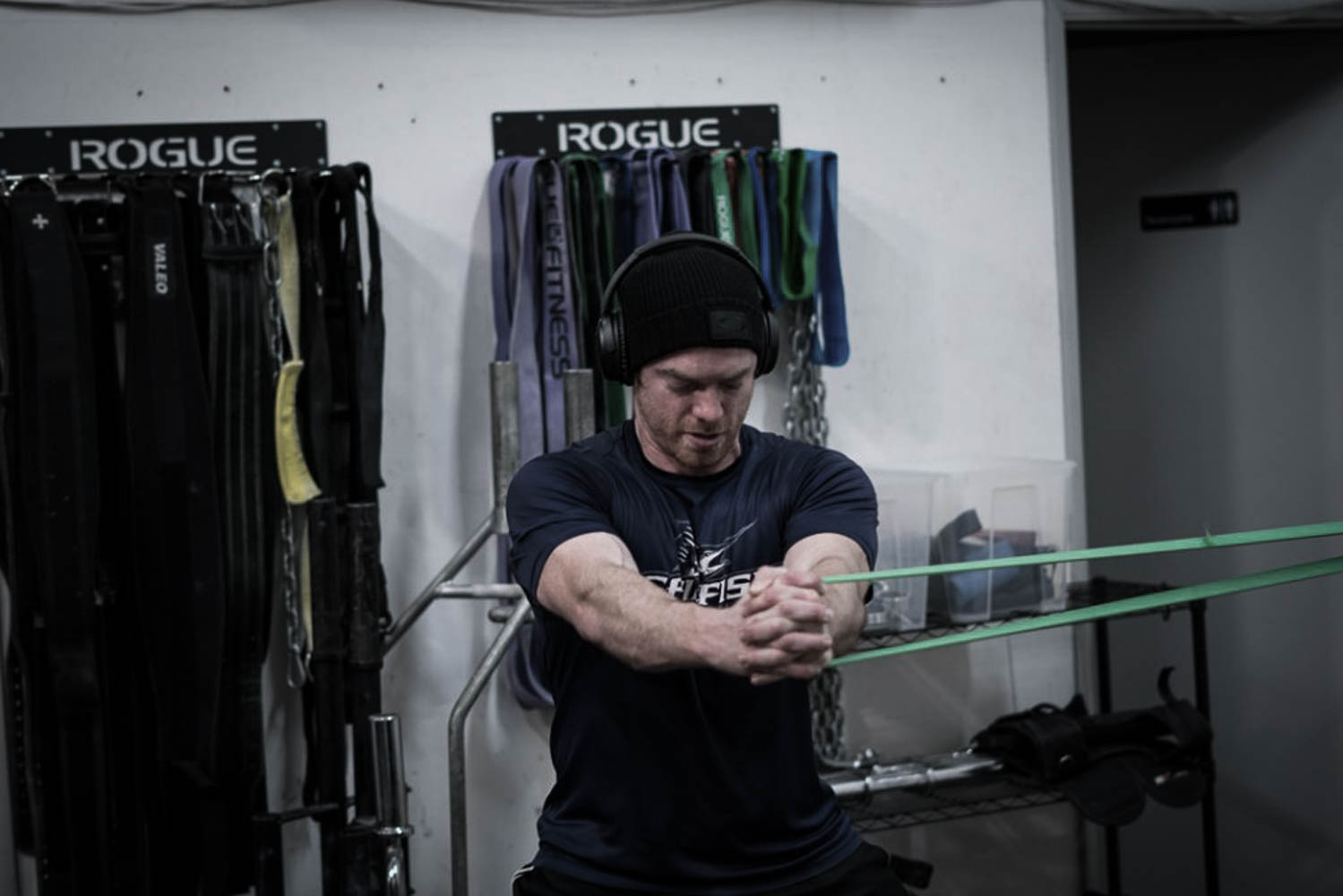
In Part 1 of this series, we talked about the importance of mobility in the pitching delivery. While mobility is crucial, stability is equally as important since it plays a critical role in injury prevention.
Mobility is defined as the ability to perform a desired movement; stability is defined as the ability to resist an undesired movement. Mobility relates to the actual movement while stability relates to the ability to control the joint through movement. Though by definition the two are opposite, they are complementary in performance.
In Part 1 we talked about mobility in the scapula, thoracic spine, and hips. In Part 2, we’re going to dive into stability in the trunk, specifically the lumbar spine and the rotator cuff.
The Trunk
Why is a strong core essential for athletics? All athletic movements originate from the core. The muscles in the core consist of the pectoralis major, external oblique, internal oblique, rectus abdominis, transverse abdominis, erector spinae, latissimus dorsi, and hip adductors.
These muscles are meant to stabilize the lumbar spine for rotation, extension, and flexion. Having a stable core allows for acceleration and deceleration during movement.
Anti-Extension
Anti-extension exercises are any exercises in which you are trying to resist extension of the spine. Baseball players spend a large amount of their time standing in extension or excessive anterior tilt of the hips. Anterior tilt of the hips means that your hips are tilted downward, or toward the front of your body, creating a lengthened posterior chain. Anterior tilt of the hips can lead to pulled hamstrings, anterior knee pain, and hip pain.
The purpose of anti-extension exercises is to encourage posterior tilt as well as engage anterior core and lumbo-pelvic hip stabilizers.
The Exercises
Dead Bug – Take a big inhale promoting 360-degree expansion into torso and lower contralateral limbs in an effort to resist extension, full exhale at the bottom of each rep.
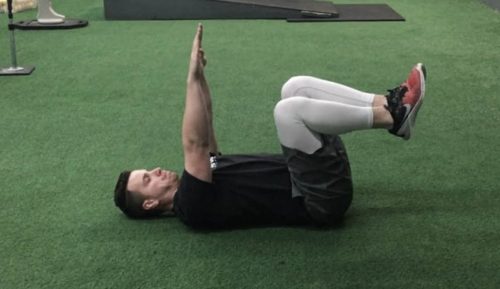
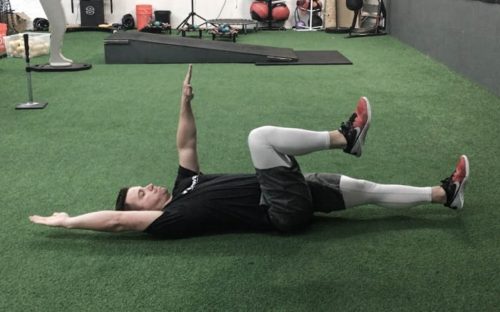
Hard Style Plank – Pull elbows and feet towards each other while squeezing glutes as tightly as possible.
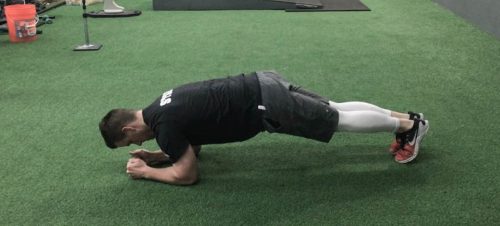
Anti-Rotation
Anti-rotation is right up there with scapular movement in degree of importance for baseball athletes. While it is essential for baseball players to be strong and rotationally explosive to throw with velocity or hit for power, it is equally important to be strong and stable to resist rotation. Any exercise in which you are trying to resist rotation through the spine is an anti-rotation exercise.
Hip-shoulder separation is a key factor in pitching development. It is difficult for athletes to dissociate the rotation between the hips and shoulders. Having anti-rotation core stability allows athletes to keep their trunks closed while their lower halves and hips rotate open. Being stable through rotation allows rotation to occur through the thoracic spine rather than the lumbar spine after getting to foot strike.
A great example of how mobility and stability compliment each other is the relationship between the thoracic and lumbar spine. Similar to what we talked about in part one, if athletes lack thoracic mobility, they will sacrifice stability for mobility in the lumbar spine to create “fake separation.”
Because of all of the rotation that occurs in baseball, such as swinging and throwing, baseball players must be able to decelerate rotation. This is why there is an abundance of oblique strains in Major League Baseball.
The goal for anti-rotation exercises is to keep the rib cage locked into the pelvis, rotate the hips, and remove pressure from the spine into the working muscles.
The Exercises
Standing Anti-Rotation Cable Iso-Hold – Hold the external load straight out from your chest without allowing the load to pull you.
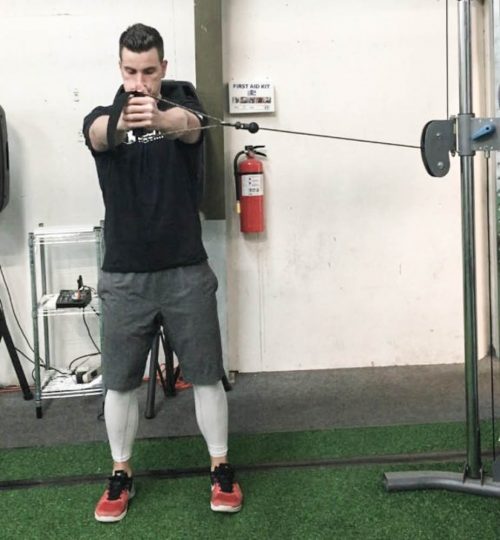
Pallof Press – Press straight out with the external load not allowing the weight to pull you.
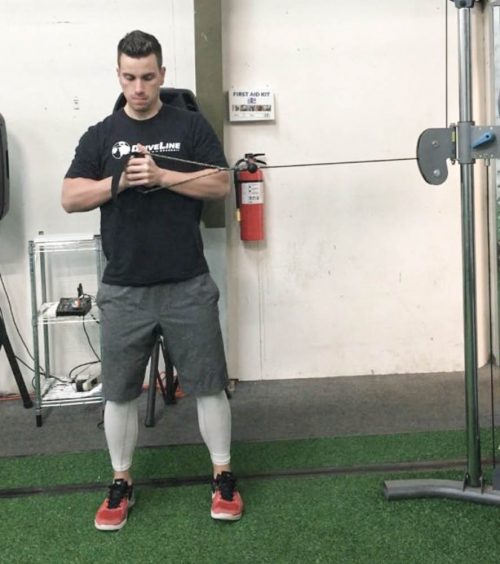

Anti-Rotation Cable Chop – Rotate the external load using only your arms without letting the torso rotate at all.
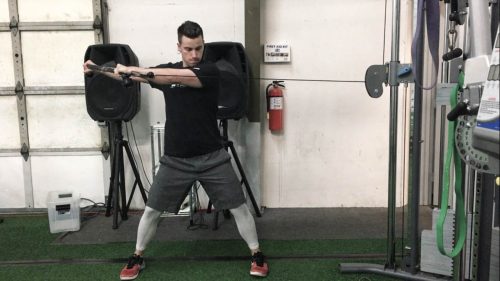
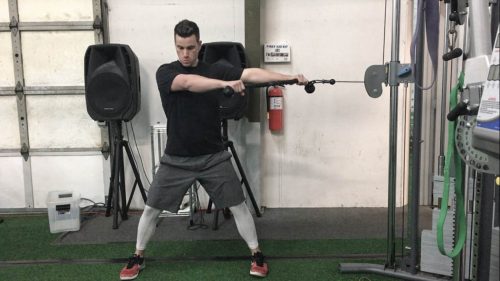
The Rotator Cuff
The muscles that make up the rotator cuff are the teres minor, infraspinatus, supraspinatus, and subscapularis. Since repetitive throwing leads to anterior shoulder laxity, rotator-cuff strength provides stability in the glenohumeral joint for injury prevention.
In Part 1 of this series, we talked about the importance of scapular movement. According to the joint-by-joint approach, the glenohumeral joint should be mobile while the scapula should be stable. However, if athletes don’t have sufficient stability in their glenohumeral joint, it’s likely that they also don’t have stability in their scapulas; another great example of how mobility and stability work together.
While it’s important to have stability in the scapula regarding protraction and retraction, mobility is necessary for upward rotation. Similarly, while mobility in the glenohumeral joint plays a role in elevating the arm into scapular plane and internal and external rotation, the rotator cuff’s main function is to provide stability to center the humeral head in the glenoid fossa. In addition to assisting in glenohumeral range of motion, the rotator cuff assists in internal and external force production, which is essential for throwing a baseball.
As far as training the rotator cuff goes, the idea is to perform exercises that force the rotator cuff to “grab onto” the ball in socket—pretty much any exercise while holding a dumbbell or barbell causes the rotator cuff to fire.
When training the rotator cuff, it is important to understand that because of the small size of the muscles, we do not want to train them to fatigue. When the rotator cuff is fatigued, the humeral head will shift towards the acromion process, increasing the likelihood of shoulder impingement. Therefore, while band work is great for activating muscles pre-throwing and recovery post-throwing, excessive band work is unnecessary and can potentially be more harmful.
The Exercises
Half-Kneeling External Rotation Rhythmic Stabilizations – In scapular plane, gently tap the elbow and upper arm for 10 seconds, forcing rotator cuff to “grab on.”
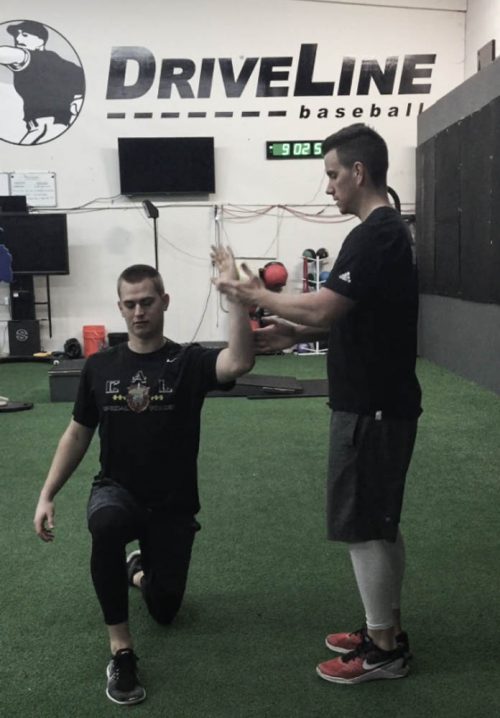
Upward Throws – A great post-throwing recovery exercise we use in gym. Start in internal rotation and externally rotate up, tossing the ball. Catch on the way back down and control the internal deceleration.
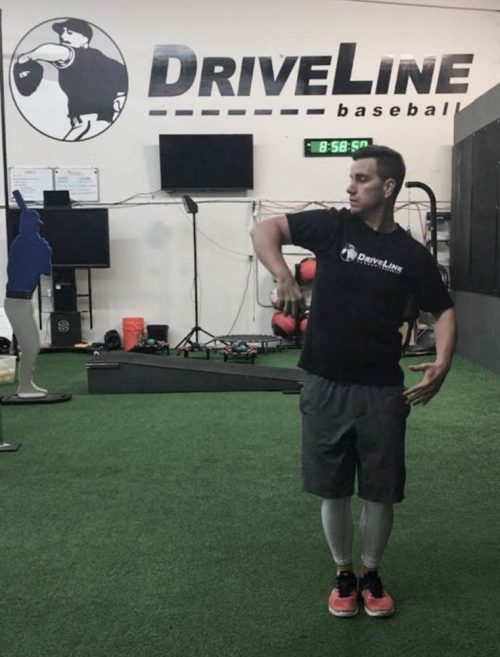
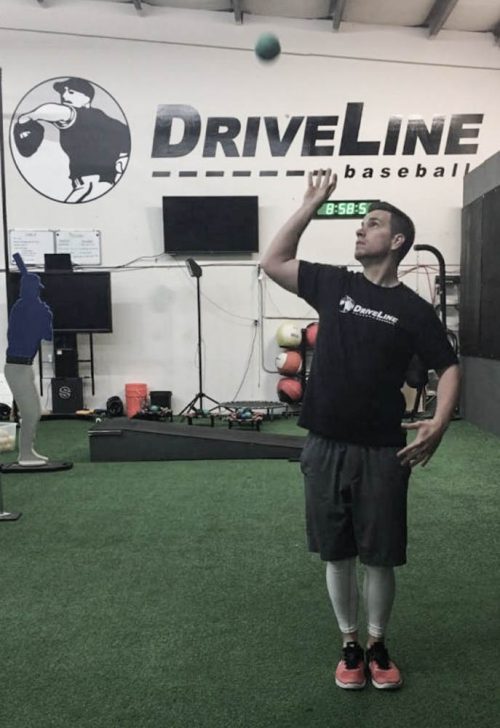
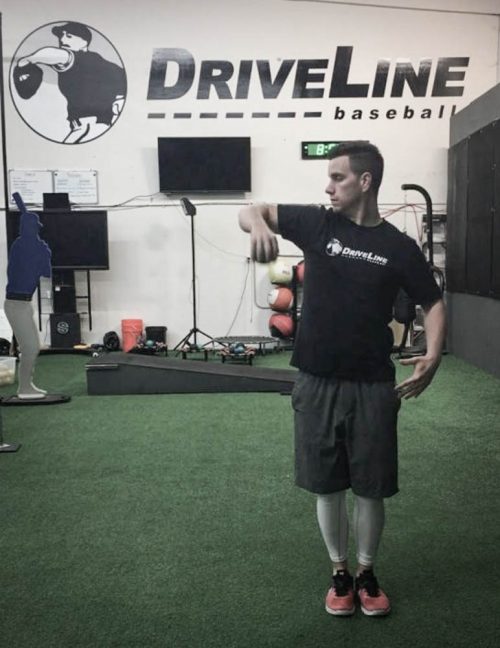
90/90 External Rotation Iso-Holds – With back up against the wall in scapular plane, have your shoulder, elbow, and hand all against the wall, press back of hand into wall and hold for 1-2 seconds.
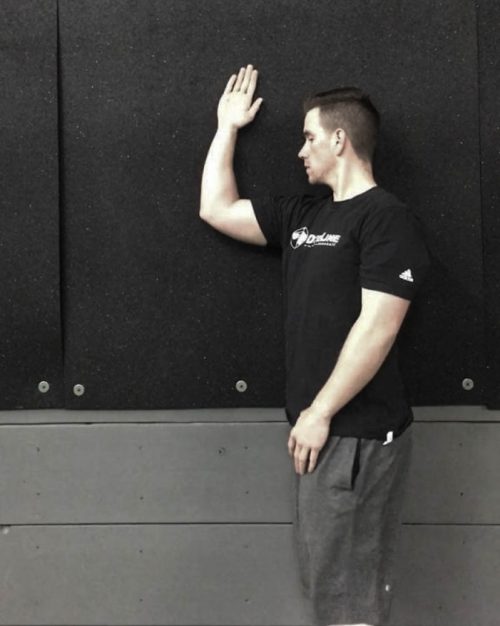
Bottoms Up KB Carry – Another great post-throwing recovery exercise in gym to stabilize the rotator cuff after throwing. Elbow slightly below shoulder, keep biceps relaxed and core engaged.
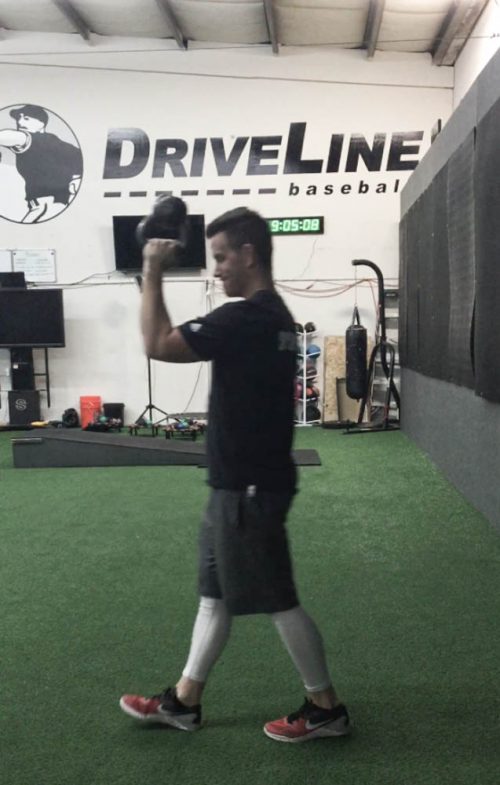
Final Thoughts
Mobility and stability needs are not always black and white. It’s important to assess athletes for movement and strength to determine what their individual needs are before programming. Regarding mobility and stability needs, understand the joint-by-joint approach, determine the soft-tissues surrounding each joint, and have an understanding of the needs of the surrounding joints and how they affect movement.
Most importantly, understand that mobility and stability, while their definitions are opposites, work together in unison to help the body move as efficiently as possible.
Want to learn more about strength training as it relates to being a better pitcher? Read all of our articles relating to strength here.
Comment section